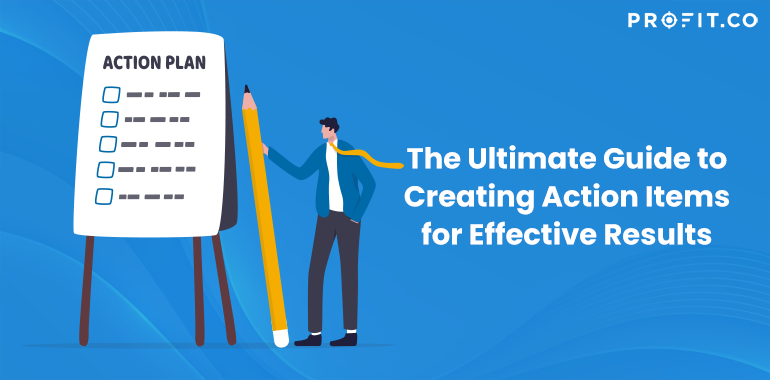Elevate your meeting productivity and task organization with our downloadable Action Items Template. Click Here
Introduction
What separates a seamlessly orchestrated project from one lost in the maze of confusion? Also, have you ever felt swamped juggling projects, teams, or those never-ending personal checklists?
If so, Then It’s time you get to know “Action Items”.
Meetings, discussions, and planning are helpful only when they lead to desired outcomes. Action items are tasks with clear deadlines assigned to individuals to drive projects toward these goals.
This blog clearly outlines all you need to know about action items.
What is an Action Item?
An action item is a specific task created from a meeting or a project to achieve a certain goal. It usually has three components: what, who, and when. What is the description of the task, who is the person responsible for completing it, and when is the deadline or the expected date of completion? Action items help to keep projects organized, track progress, and hold team members accountable.
To make it simple, while planning Action items, you want to document it in meeting minutes or task lists to ensure they are tracked and completed as agreed upon. Make sure that each action item typically has:

- A description of the task.
- The name of the person (or persons) responsible for completing it.
- A deadline or timeframe for completion
Regularly reviewing and updating the status of action items is essential for keeping projects on track and ensuring that responsibilities are clearly understood.
Here’s a simple guide on action items to turn a mundane project journey into something interesting
- Crafting Action Items Like a Pro: The anatomy of perfect, goal-crushing tasks.
- Delegation Dynamics: Assigning tasks with precision for maximized outcomes.
- Strategize with Priorities: Organize tasks to propel your project forward.
- Stay in the Loop: Techniques to monitor and fuel the progress of your action items.
- Tech-Talk: The digital tools to manage, track, and triumph over action items.
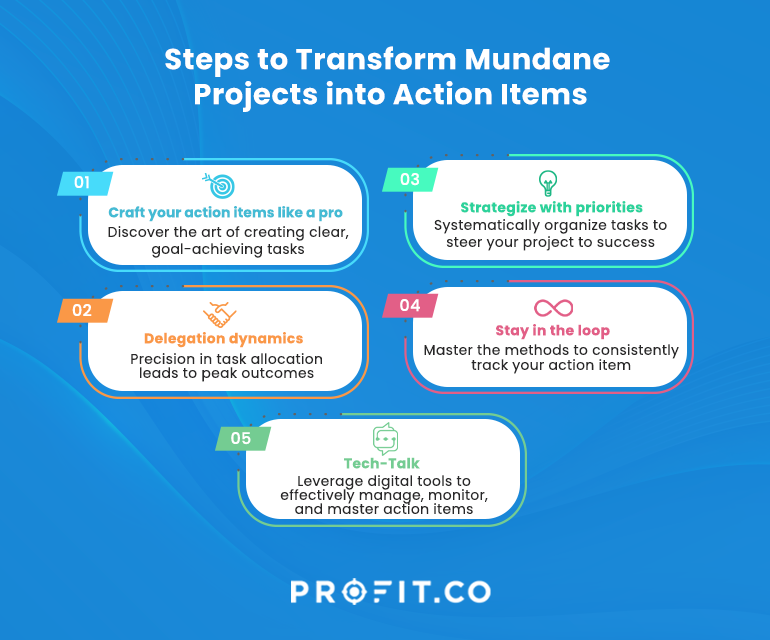
Benefits of Using Action Items
They are often used in project management, meetings, and goal setting to ensure accountability and progress. Action items implementation plan can have many advantages, such as
- Crystal-clear vision
Eliminate ambiguity from your projects. Allocate tasks with laser-like precision! Action items lay out a transparent roadmap.
- Accountability
Team members are more invested in successful outcomes when every task is distinctly labeled.
When tasks have a name tag, the ownership vibe skyrockets. - Track milestones
Keep an eagle’s eye on the journey! Action items are the stepping stones, ensuring no deviation from the victory path.
- Prioritization of tasks
With hundreds of tasks seeking attention, recognizing what demands immediate attention is vital. Action items spotlight these pressing tasks, ensuring nothing slips through the cracks.
- Facilitation of collaboration and communication
Talk the right talk and Keep the team harmonious! Foster a culture of clear and concise communication. Action items, serving as a collective reference point, ensure team members are aligned, facilitating smoother collaborations.
- Improves productivity
Segmenting overarching goals into tangible action items fuels efficiency. This systematic breakdown propels teams to tackle objectives and methodically allocate resources, amplifying overall productivity.
Jumpstart progress with action items, and watch goals transform into achievements!
Creating Effective Action Items
Creating effective action items is key to ensuring tasks are understood, actionable, and completed on time. Here are some steps and best practices for creating effective action items:
Be specific
An effective action item should be clear and concise, leaving no room for ambiguity. Instead of “Research vendors,” say, “Research and create a list of five potential software vendors for project management tools by Friday.”
Document and track
Use tools or systems to document action items, whether a simple spreadsheet, a task management tool, or a project management system. Regularly review and update the status of each action item.
Set deadlines
Deadlines ensure that tasks are completed on time. Without a deadline, tasks can be pushed off indefinitely.
Make It measurable
Define what success looks like. If it’s a larger task, break it into smaller, more measurable components. For instance, rather than “Develop a marketing plan,” you might have separate action items for “Identify target audience,” “Determine marketing channels,” and “Set marketing budget.”
Keep It visible
Use collaborative tools where teams can see outstanding action items. This transparency can help with accountability and foster a collaborative approach to task completion.

Action Item Assignments to Teammates
Assigning action items to teammates is critical to team and project management. Here are steps and best practices for assigning action items effectively:
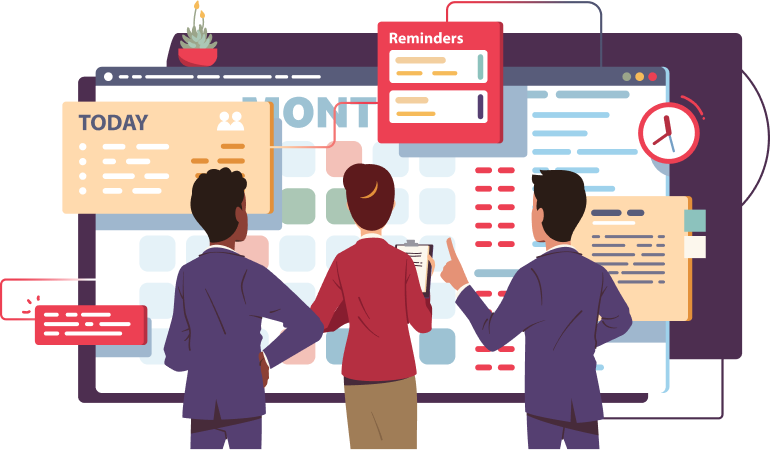
Know their superpowers
Every teammate is a superhero. Match action items with their unique strengths, passions, and growth paths. Tailor- make assignments for a winning strategy!
Strike the perfect balance
Distribute the weight, ensuring no one’s overwhelmed or idle. Remember: A well-balanced team is an unstoppable force!
Crystal clear conversations
Simplify communication! Share the ‘why’ behind every task and set clear visions. Open the floor for their insights – they might have that game-changing idea!
Be their biggest cheerleader
Equip them with the tools for success, and keep an eye out to offer a helping hand. And don’t forget – every win, big or small, deserves a standing ovation!
Monitoring and Overseeing Action Items
When you track and manage an action item list, you also need to learn the nuances of an action item list vs meeting minutes. The meeting minutes provide a holistic view of what was discussed and decided in a meeting, and an action item list pinpoints specific tasks that emerged from those discussions. Meeting minutes might contain an action item list, but the latter can also stand alone, especially when used for task tracking in the days and weeks following a meeting.
To explore an action item example, let’s consider Profit.co’s 1:1 Meeting, Profit.co allows users to conveniently schedule meetings with individuals, teams, and departments within their organization. Scheduling a meeting in Profit.co streamlines collaboration by centralizing agendas and notes. It enables efficient tracking of objectives and key results, and fosters enhanced communication among team members. They can also detect potential roadblocks that can impede progress and course correction. Profit.co has a Meeting feature exclusively for users to schedule, 1:1 Team, weekly, and quarterly meetings. You can sync the meeting scheduled with Google Calendar as well, amazing isnt it? There is no need to switch between platforms to check time availability on the calendar, instead, you can stay at Profit.co and access your Google calendar.

1. Definition of action items
When you want to frame an action item definition, make sure it answers the following criteria.
What? Define the task that needs to be done clearly.
Who? Assign a responsible person for each action item.
When? Set a clear deadline for completion.
2. Use tools
Physical tools: Notebooks, whiteboards, printed sheets.
Digital tools: Software like Trello, Asana, Monday.com, Microsoft Teams, Google Tasks, or spreadsheets can be helpful.
3. Prioritize
Not all action items hold equal weight. Determine which are most urgent or important and prioritize accordingly.
4. Regularly update & review
Update: As tasks progress or are completed, ensure they’re updated in your action item tracking system.
Review: Regularly review the list of action items. This can be in team meetings or individual check-ins.
5. Categorize
Group action items based on projects, departments, urgency, or any other criterion that makes sense for the situation.
6. Document
Ensure all action items are documented during meetings, and distribute the minutes, including these action items after the meeting to all participants.
7. Stay accountable
Make sure the person responsible for the action item knows and acknowledges their task.
Use reminders. Tools like Slack, Asana, and others can send automated reminders as deadlines approach.
8. Transparent communication
Foster an environment where Communication between team members is comfortable about the status of their action items, whether they’re on track, delayed, or need assistance.
9. Set clear expectations
Each action item’s scope and expected outcomes should be clearly defined from the beginning.
10. Be flexible
While deadlines and accountability are essential, it’s also crucial to be flexible and understand unforeseen challenges. Adjust deadlines if needed, but ensure new dates are communicated and agreed upon.
How to Rank Action Items Based on Priorities?
Turn the ordinary tasks of your day into a more efficient list by prioritization! Here are some tips to help you along the way.
Weigh the effort
Label tasks based on effort—low, medium, high.
Be purposeful
What’s the impact of your task? How does it affect your work journey? Let the desired outcomes guide the prioritization.
Practice adaptability
Adjust, shift, and recalibrate based on new feedback or shifting deadlines.
Eliminate when needed
When your to-do list overflows, know which one to stash for later. Discern, delegate, or delay.
Shield against distractions
Are you battling the sirens of emails and the constant pings of the modern world? Create productive spaces to stay away from distractions.
The calendar tool
Manage time’s power with a scheduled calendar. Plot, plan, and perfect your workflow.
The Power of Completing Action Items
Though seemingly modest, action items are the building blocks of any successful endeavor. Their power lies not in their complexity but in their completion. As each item is marked off, it signifies a task accomplished and embodies the discipline, commitment, and focus paramount to achieving greatness. It’s through these tiny victories that grand visions come to life.
Elevates your confidence
Every tick on your to-do list is a testimony to your capabilities. Not only does it act as a silent cheerleader for your self-worth, but it’s also a showcase of your experience and skill set. It’s a personal victory lap that propels your career and aspirations forward.
Supercharge satisfaction
There’s an undeniable thrill in crossing off tasks. Gives a sense of accomplishment, purpose, and the respect of peers. Plus, treating yourself post-completion? It’s the cherry on top!
Expands your skill
With each completed task, you’re not just getting things done – you’re evolving. The lessons from triumphs and hiccups are avenues to explore professional and personal growth, opening doors to new opportunities.
The Art of Action Item Review & Reflection
It is important to review and reflect on action items with a critical eye by turning every task into a treasure trove of insights! Action item tasks are not just ordinary tasks but a stepping stone towards productivity and collaboration.
- Track progress
- Perfect the process
- Celebrate & communicate
- Blueprint is everything
- Question the purpose
- Data speaks
- 360 degree feedback
Consistently monitoring the evolution of action items, teams can identify bottlenecks and streamline workflows.
Continual refinement of action items can unveil more efficient methods and best practices.
Recognizing the achievement of action items boosts morale and reinforces team cohesion. Open communication about these successes not only motivates but also improves team engagement.
Think of frameworks guiding your journey of reflection. Consistency is key, whether it’s the revered AAR framework or a custom template.
Navigate your reflection journey with probing questions. Dive deep, seek answers, and uncover the heart of every action item’s story.
Fortify your insights with solid data. From time metrics to feedback, let every number speak for itself.
Engage your team, managers, and beneficiaries. Their perspectives are the multifaceted feedback that completes your reflection journey.
Integrating Action Items into Your Workflow
Integrating action items into your workflow ensures that you and your team work efficiently and effectively on your projects or tasks. Action items are t specific, measurable, and achievable steps that need to be taken to accomplish a goal or complete a task. By integrating them into your workflow, you can:
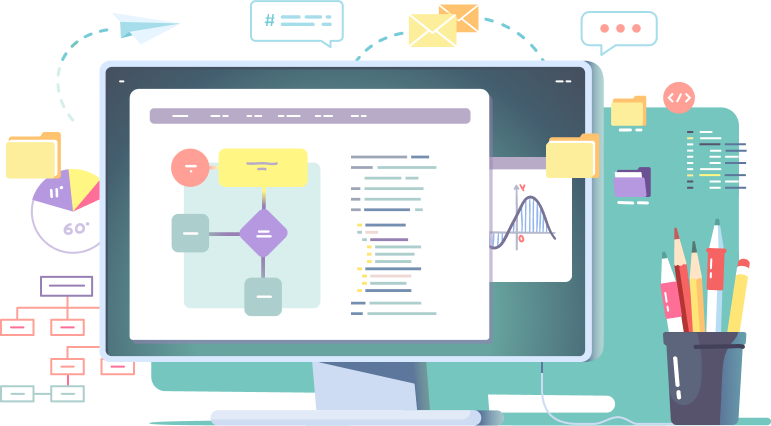
Benefits of Integration in a Nutshell
Seamlessly weaving action items into your routine can supercharge productivity.
- Track with tools like calendars and apps, stay on top of tasks and celebrate milestones.
- Harness data to refine your strategies and learn from each move.
- Strengthen team communication collaboration and grow together.
Mastering the Integration Process
Embrace action items and watch your team’s prowess skyrocket!
Stay Organized: Use templates or frameworks, like the after-action review (AAR).
Stay Curious: Probing questions can unveil deeper insights.
Stay Informed: Gather data for an evidence-backed approach. Tools like Toggl can be your best friend.
Stay Connected: Engage with peers, superiors, and clients for 360° feedback.
How can you Scale up Action Items using Profit.co’s Task Management?
Profit.co’s Task Management software is a tool that helps you plan, organize, and track your tasks and projects. It allows you to create tasks or action items, assign them to team members, set deadlines and priorities, and monitor progress. You can also link your tasks to your OKRs (Objectives and Key Results), which are strategic goals that help you align your work with your vision and mission.Profit.co’s Task Management software to collaborate with your team, share feedback, and celebrate achievements.
Profit.co’s Task Management software integrates with other apps and platforms, such as Jira, Slack, G Suite, Zapier, Teams, Office 365, and more. Integrating OKRs and task management in Profit.co ensures that the tactical day-to-day tasks align with strategic organizational objectives. This promotes clarity, cohesion, and efficiency across teams and the organization.
If you want to learn more about Profit.co’s Task Management software, you can visit the Profit.co website. You can also watch videos or read blogs explaining how to use the software effectively. Here are some examples:
- Importance of Scheduling Tasks and its Benefits
- A Complete Guide to Work Breakdown Structure
- Task Management Module Overview | Profit.co
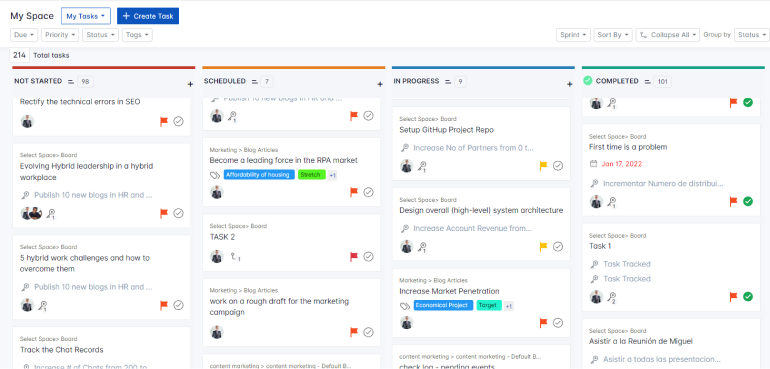
Concluding Insights
This ultimate guide will prepare you to craft the most impeccable action items meaning! Not only do we shed light on what makes an action item tick, but we have also thrown real-world action item examples – the good, the bad, and the ‘not-so-feasible’ actions.
And yes, we don’t stop there! Get some task management tools and templates designed exclusively to amplify your action item game. This isn’t just another blog post. It’s your treasure map to success. Remember, action items are more than a checklist – they’re your golden ticket to structured work, supreme accountability, and synergized collaboration. Equip yourself with our tried and tested strategies and watch your productivity multiply!
Watch your team conquer every action item with unmatched zest!
Related Articles
-
How to Increase Your Productivity with No Meeting Day?
Introduction The contemporary workspace is a hotbed of constant distractions: incessant meetings, casual hallway chats, quick coffee breaks, phone buzzes,... Read more
-
Crafting an Effective Meeting Agenda: A Step-by-Step Guide
Introduction The metamorphosis of our work environment, characterized by hybrid and flexible modes, has only intensified the age-old challenge of... Read more
